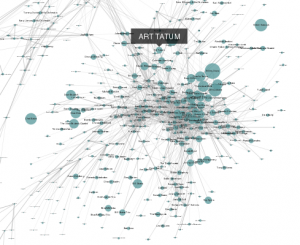You have no doubt heard about the crimes committed at Charlie Hebdo in Paris on 7 January 2015.
The digital Stasi in many governments have been inspired by the Charlie Hebdo. Even now they are seeking to suppress your liberties and loot government treasuries.
For example, the EU thinks censoring free speech is a good idea. David Meyer reports in: EU response to free speech killings? More internet censorship
In the wake of this week’s terrorist attacks in Paris, which began with the killing of 12 people at the offices of satirical publication Charlie Hebdo, the interior ministers of 12 EU countries have called for a limited increase in internet censorship.
The interior ministers of France, Germany, Latvia, Austria, Belgium, Denmark, Spain, Italy, the Netherlands, Poland, Sweden and the U.K. said in a statement (PDF) that, while the internet must remain “in scrupulous observance of fundamental freedoms, a forum for free expression, in full respect of the law,” ISPs need to help “create the conditions of a swift reporting of material that aims to incite hatred and terror and the condition of its removing, where appropriate/possible.”
ISPs as spies? Content as recruiting terrorists?
This is the same argument made against smoking/drinking/sex in movies, pornography in general, sex/violence in video games, drugs in rock-n-roll music, Elvis moving his pelvis at all on the Ed Sullivan show, etc.
There is a catch, no one has ever established a causal link between any of those things and the activities complained of. Not one, not once.
Why do public officials keep claiming something for which there is no evidence? I can’t speak about their personal motives but as a practical matter, the argument gives them something to do, with tangible results (metrics).
Hear a song glorifying terrorism? Take it off the radio. See a poster than says something favorable to terrorism? Take it down. Anyone offer any analysis that isn’t cheering the government on? Put them on a watch list. Numbers/metrics that can be put into secret reports.
You may say none of that would have prevented the attack on Charlie Hebdo. Your right. 100% right. But government leaders don’t have to be effective, they just have to look busy. Blaming media content for terrorism is government looking busy.
If you saw Eric Holder (U.S. Attorney General) on Sunday morning interviews, he said:
It’s something that frankly keeps me up at night worrying about the lone wolf, or a group of people, very small group of people who decide to get arms on their own and do what we saw in France this week. It’s the kind of thing that our government is focused on doing all that we can in conjunction with our state and local counterparts to try to make sure it does not happen.
I’m sorry that Holder wastes time worrying about lone wolves or small groups of people. We call them criminals and gangs in the South. Don’t know what they are called elsewhere.
There isn’t any reasonable way to stop lone wolves or small groups of people from any illegal activity. If that were possible, why do we still have drive by shootings? Bank robberies? Rapes? Murders? You name the crime and you can’t prevent it. What makes you think the odds are different with crimes committed by terrorists?
The digital Stasi are always on the lookout for vulnerable public treasuries. Best represented on Sunday morning by John Miller, NYPD Deputy Commissioner. When asked about the French possibly having intelligence that they didn’t follow up on, Miller responds:
I think one of the things that’s really important to highlight are the resources that were available to French intelligence and the French police. Those resources were cut over the last several years. They had to make very difficult choices about who to focus on, who to surveil, and who they had to not surveil because they didn’t have the resources.
Governments are going to have to fund their law enforcement and their intelligence services to meet this threat. And that includes the United States.
In a nutshell, with more money we can have more surveillance, to meet this threat.
First, the more people that enroll in the security forces the more often you will see headlines about internal security breaches, like Delta Airlines being used to smuggle guns. Very few airline employees are terrorists but if you enlisted them for smuggling drugs, guns, cigarettes, the number of commercial flights out of reach would be vanishingly small.
Second, the more money wasted on security that doesn’t stop any terrorist the less money is spent on education, libraries, arts, public works, medical care/research, science and a host of other things that improve our overall quality of life.
Third, has there been any reduction in terrorism in the United States after 9/11? If so it hasn’t been reported.
With no demonstration of a reduction in terrorism, why throw good money after bad?
Will terrorist attacks continue if we don’t give into the digital Stasi? Sure, at about the same rate as if we do. The difference being that we don’t cower in bed every night because something bad may happen tomorrow.
With enough tomorrows, something bad will happen. As close to certainty as people can get. But we can choose how to react to bad things. We can mourn, bury the dead, and live high quality lives in between bad things happening.
Or, we can rant and scream for government to look busy keeping us safe. In the process we will live miserable, cramped, pitiful lives under constant surveillance. And bad things will happen anyway.
It’s life, we take casualties along the way. Deal with it.
Update: Apologies, I forgot to cite the source for the Holder and Miller quotes: Face the Nation Transcripts January 11, 2015: Holder, Miller, McCaul



